Chinese Zodiac Compatibility: Best Matches, Love Clashes, and Relationship Insights
5/24/2025, 10:10:56 PM
Introduction to Chinese Zodiac Compatibility
Chinese Zodiac compatibility is a traditional way to evaluate how well two people might get along in love or marriage, based on the Chinese lunar calendar’s 12 animal signs. In Chinese culture, each person’s birth year is represented by an animal (Rat, Ox, Tiger, Rabbit, Dragon, Snake, Horse, Goat/Sheep, Monkey, Rooster, Dog, Pig), and it’s believed that the traits of these zodiac animals influence personality and relationship dynamics . For centuries, families would consider zodiac signs to gauge marriage harmony – which zodiac signs are a good match, and which might clash – as a guidance (albeit a general one) for romantic relationships . Today, many people still consult Chinese astrology love compatibility as a fun or insightful way to see if “she/he is compatible with you” .
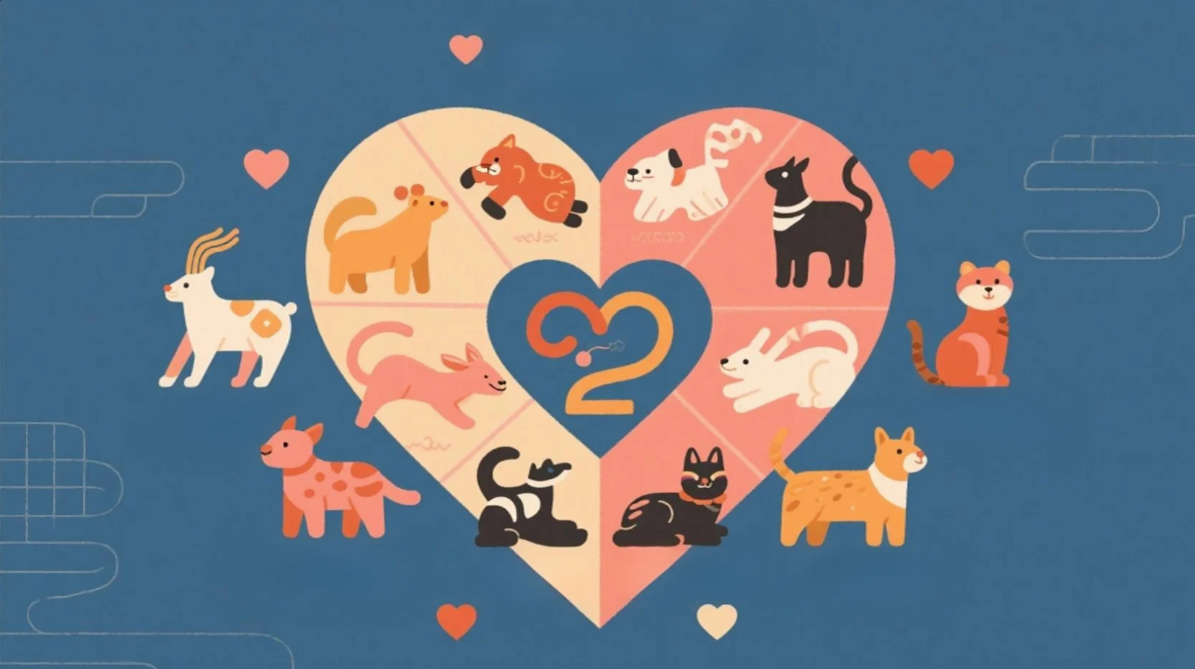
Why does Chinese zodiac compatibility matter in relationships? Culturally, it’s about fostering harmony. Certain animal signs are thought to complement each other’s strengths and weaknesses, creating a balanced partnership, whereas other combinations might mean conflicting temperaments. For example, a calm, methodical Ox might pair well with a clever Rat, but a fiery Horse might butt heads with that same Ox (at least according to the lore). While not scientific, these traditional beliefs offer an approachable framework for understanding interpersonal chemistry. They prompt couples to discuss differences and expectations – which is valuable in any relationship, regardless of astrology. In this guide, we’ll explore the Chinese zodiac compatibility chart, explain which signs are compatible and why (from both classical astrology and popular interpretation), answer common questions (like “How accurate is it?” and “Are Dog and Tiger compatible?”), and provide tips on using these insights (including a modern AI-powered tool) to improve your relationship.
Chinese Zodiac Compatibility Chart (12×12 Signs)
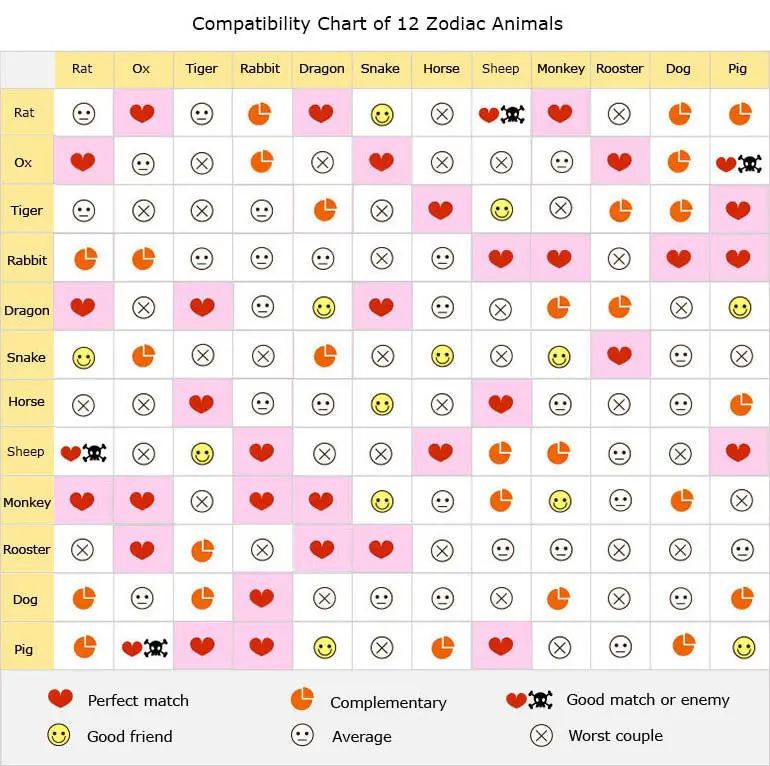
A typical Chinese zodiac compatibility chart, rating the relationship outlook for each pair of the 12 animal signs. A heart (❤️) indicates a perfect match, a smile 🙂 means a good friendship, an orange circle 🟠 suggests a complementary but not perfect match, a neutral face 😐 is average compatibility, and an “X” (✕) marks the most challenging (“worst”) combinations.
One popular way to visualize Chinese zodiac sign compatibility is with a 12×12 matrix chart. In the chart below, each row represents the zodiac sign of Person A and each column the sign of Person B. The cell where a row and column meet indicates the compatibility level of that pair (“Good”, “Average”, or “Poor” for simplicity). The chart is symmetric (compatibility goes both ways), and you can read it for any two signs regardless of order. For example, to see if a Dragon and a Pig get along, find the “Dragon” row and the “Pig” column (or vice versa).
“Good” = a harmonious or highly compatible match; “Average” = a moderate match that can work with effort; “Poor” = a challenging match that is traditionally considered less compatible. (Of course, every relationship is unique – even a “poor” matchup can succeed with understanding, and a “good” match can fail if taken for granted.)
This chart reflects traditional compatibility patterns found in Chinese astrology sources . You’ll notice some clear patterns: for instance, Rat is marked “Good” with Ox, Dragon, Monkey (these are Rat’s best matches) and “Poor” with Horse and Rooster (often considered Rat’s worst matches) . Meanwhile, Tiger shows “Good” with Dragon, Horse, Pig and “Poor” with Ox, Snake, Monkey . These align with classic teachings (which we’ll explain below). Use the chart as a quick reference for any two signs, then read on to understand why certain signs click or clash.
Which Chinese Zodiac Signs Are Most Compatible?
In Chinese astrology, some sign combinations are famously compatible – almost a match made in heaven – due to either similar temperaments or complementary qualities. The most compatible Chinese zodiac signs are often described in two frameworks:
-
Four Affinity Groups (Trines): The 12 animals are grouped into four harmonious trios of three signs each . Within each group, the three signs are thought to understand and complement each other deeply. These groups are:
Group 1: Rat, Dragon, Monkey – Active, intelligent, and ambitious signs. They stimulate each other’s intellect and make a dynamic team . (For example, the clever Rat and visionary Dragon both appreciate the Monkey’s quick wit.)
Group 2: Ox, Snake, Rooster – Thoughtful, goal-oriented, and detail-conscious. These signs share a serious outlook and support each other’s plans . (The steady Ox and shrewd Snake, for instance, both value Rooster’s precision and loyalty.)
Group 3: Tiger, Horse, Dog – Freedom-loving, brave, and charismatic. They have strong personal egos but also respect each other’s independence . (A Tiger and Dog often form a loyal bond – both are bold and protective, forging mutual respect – while Horse adds passion and optimism to the mix.)
Group 4: Rabbit, Goat (Sheep), Pig – Peaceful, compassionate, and cooperative. These three are gentle souls who value harmony and mutual support . (For example, a Rabbit and Goat together create a nurturing, understanding couple, and the Pig’s generosity blends well with both.)
Why these groups? If you number the zodiac cycle 1 through 12 in order, the animals in each affinity group are four years apart from each other. Chinese astrology notes that signs four years apart tend to be highly compatible . In practice, people born 4 or 8 years apart (since each group has 3 members spaced by 4) often share a natural rapport.
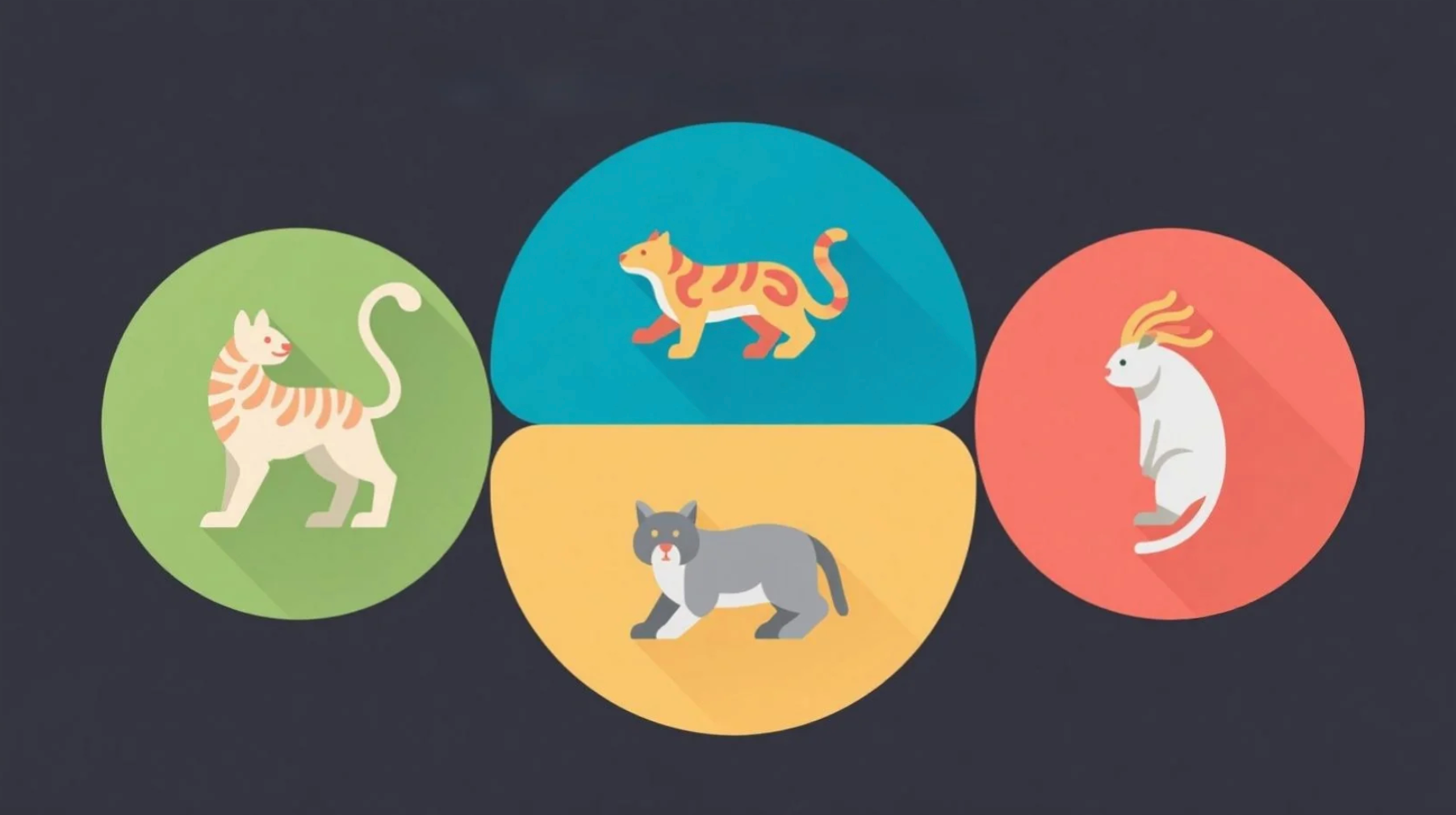
-
Six Harmony Pairs (Liu He): Apart from the trios, there are six special pairings of signs said to have a magical bond. These pairs are: Rat ✧ Ox, Tiger ✧ Pig, Rabbit ✧ Dog, Dragon ✧ Rooster, Snake ✧ Monkey, and Horse ✧ Goat. Each of these six pairings is believed to form a “harmonious union”, often explained by an elemental or symbolic affinity. For example, Rat and Ox are seen as a balanced duo – the Rat’s cunning and the Ox’s diligence compensate for each other. Snake and Monkey form an intriguing pair, often understanding each other’s unspoken intentions (in Chinese folk astrology they are even said to secretly “combine” their energies). Tiger and Pig are another well-known match: the generous Pig provides the warm support that the bold Tiger needs, and the Tiger returns loyalty and protection. In fact, Tiger–Pig is explicitly listed among the Tiger’s best matches in many compatibility charts . Likewise, Rabbit and Dog make a loving pair – the kind Dog admires the Rabbit’s gentle nature, and Rabbit feels secure with loyal Dog. These six harmony pairs sometimes cut across the above trio groups, creating additional best matches beyond the triads.
When two people belong to one of these compatible groups or pairs, they are said to have natural chemistry. They often share values or complement each other’s personalities. In our chart above, these combinations are mostly labeled as “Good”. For instance, Rat–Dragon, Ox–Snake, Tiger–Horse, Rabbit–Goat, etc., are all Good matches. Even one-on-one pairs like Dragon and Rooster are marked Good (Dragon appreciates Rooster’s supportiveness, and Rooster respects Dragon’s confidence) . In short, the most compatible Chinese zodiac signs tend to be either in the same affinity trio or one of the special paired unions. Couples with these sign combinations often find it easier to understand each other and cooperate, according to traditional belief.
It’s worth noting these compatibility groupings come from traditional Chinese astrology principles. One principle ties back to the Five Elements (Wu Xing): each zodiac animal is associated with an element (Wood, Fire, Earth, Metal, or Water) and a yin/yang polarity . The affinity groups we listed are no coincidence – for example, all members of Group 2 (Ox, Snake, Rooster) share the Metal element affinity in Chinese astrology, which partly explains their harmony. Similarly, Group 4 (Rabbit, Goat, Pig) corresponds to the Wood element or peaceful Yin energy, creating a natural sympathy among them. In elemental theory, elements that generate each other (productive cycle) foster compatibility: e.g. Water feeds Wood, Wood fuels Fire, Fire creates Earth, Earth bears Metal, Metal carries Water . So a Water-related sign (like Rat, a Water element animal) tends to get along with a Wood-related sign (like Rabbit) since Water helps Wood grow . These deeper elemental dynamics provide a classical explanation for why certain signs are “most compatible.” (We’ll discuss more on the Five Elements shortly.)
Challenging Zodiac Combinations and Clashes
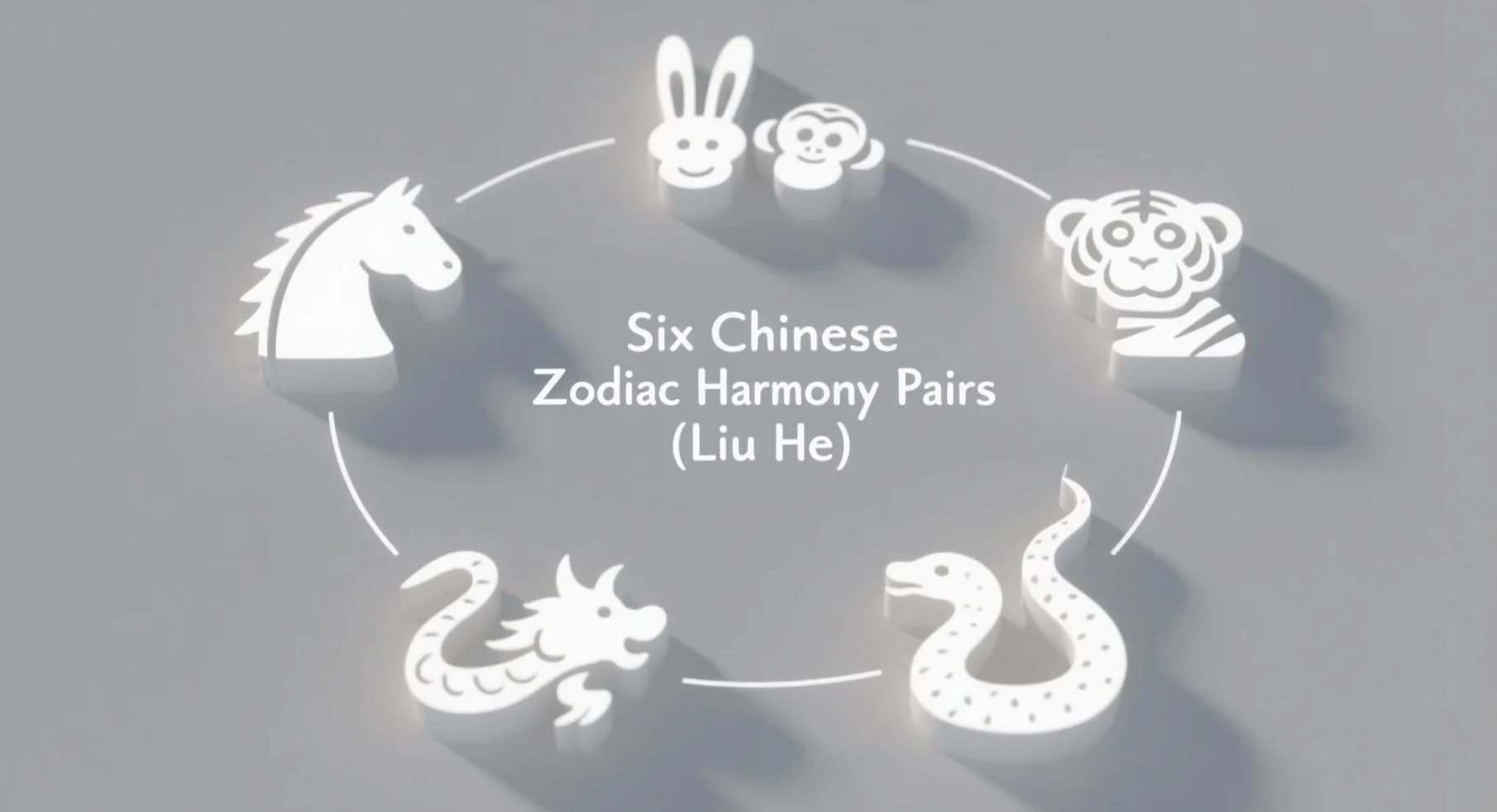
Just as some signs naturally click, other zodiac combinations are considered challenging matches. In Chinese astrology, the phrase “zodiac clash” refers to particularly difficult pairings that may require extra understanding and compromise to work out. Here are the key patterns for incompatibility:
-
Direct Opposites (6-Year Apart Clashes): If two signs are six years apart in the 12-year cycle, they sit directly opposite each other in the zodiac wheel. These pairs often face the greatest conflict. Traditional wisdom says such matches “cannot see eye to eye” . Examples of opposite sign clashes are: Rat vs. Horse, Ox vs. Goat (Sheep), Tiger vs. Monkey, Rabbit vs. Rooster, Dragon vs. Dog, and Snake vs. Pig. In the chart above, these opposite pairs are mostly marked as “Poor” (for instance, Rat✕Horse, Ox✕Goat, etc.). The idea is that their personalities and fortunes pull in opposite directions – e.g. the Rat (social, shrewd) and Horse (independent, impulsive) may struggle for mutual understanding, or Dragon’s proud nature might conflict with Dog’s principled loyalty, and so on. Traditionally, matchmakers would caution couples with opposing signs unless other factors (like a strong bond or compensating elements) could offset the clash.
-
“Unlucky” Four-Year Gaps (3-Year Apart Conflicts): Earlier we noted that signs four years apart (the trines) are very compatible. Interestingly, signs that are three years apart (on either side) are seen as potentially incompatible. If you start from any sign and count it as 1, the 4th sign in either direction around the circle is typically unfavorable . For example, starting from Rat as 1, the 4th sign clockwise is Rabbit and counter-clockwise is Rooster – indeed Rat vs Rabbit or Rat vs Rooster are cited as incompatible combos . You can spot this pattern: Rat–Rabbit and Rat–Rooster were both “Poor” in the chart. Similarly, Ox–Tiger or Ox–Dog (counting three apart yields Tiger and Dog) have some friction; Tiger–Snake or Tiger–Ox (Tiger counting three forward or back) are rough pairings, and so on. These 3-year differences are sometimes called “incompatible combinations” in folklore . They’re not as dramatically opposed as the 6-year clashes, but they still indicate a mismatch of energies (for instance, Tiger’s boldness vs. Snake’s tactful reserve can lead to mistrust).
-
Same Sign Matches: What if both people have the same zodiac animal? This can go either way. Some astrology sources consider identical signs just “average” or a bit flat – since the partners may understand each other well but also share the same flaws. In our chart, you’ll notice e.g. Dragon–Dragon was left as “Average” (neither great nor terrible). On the other hand, a few signs are thought to clash with themselves if too similar: two Tigers (both competitive leaders) might lock horns, or two Horses (both freedom-loving and restless) could find it hard to settle down together. In fact, one compatibility chart listed Tiger–Tiger and Horse–Horse among the worst matches . Generally though, being the exact same sign isn’t singled out in traditional texts as much as the specific inter-sign clashes above. Two people of the same animal can certainly relate to each other’s mindset – which can be good – but they have to watch out for reinforcing each other’s weaknesses.
-
Elemental Mismatches: Another subtle factor is the interaction of the Five Elements between two people’s signs. Each zodiac animal has a fixed intrinsic element and each birth year has its own element cycle. Certain element combinations are believed to cause friction. For example, Fire and Water have a controlling relationship (water douses fire), so a person whose chart is heavily Fire might conflict with someone strongly Water until they find balance. Similarly, Wood vs. Metal (metal chops wood) can be a destructive cycle. So if two signs’ elements are naturally in conflict, that adds a challenge. A classic case: The Horse (Fire) and Rat (Water) not only oppose by year, but also elementally clash (Rat’s Water energy clashes with Horse’s Fire) – hence it’s one of the hardest combos in Chinese zodiac lore . On the flip side, some “clashing” sign pairs can mitigate their tension if their specific birth year elements are compatible (for instance, a Water Horse might get along better with a Rat than a Fire Horse would). This is getting into the weeds of classical astrology, but it highlights that compatibility isn’t just about the animal sign alone – the element profile matters too .
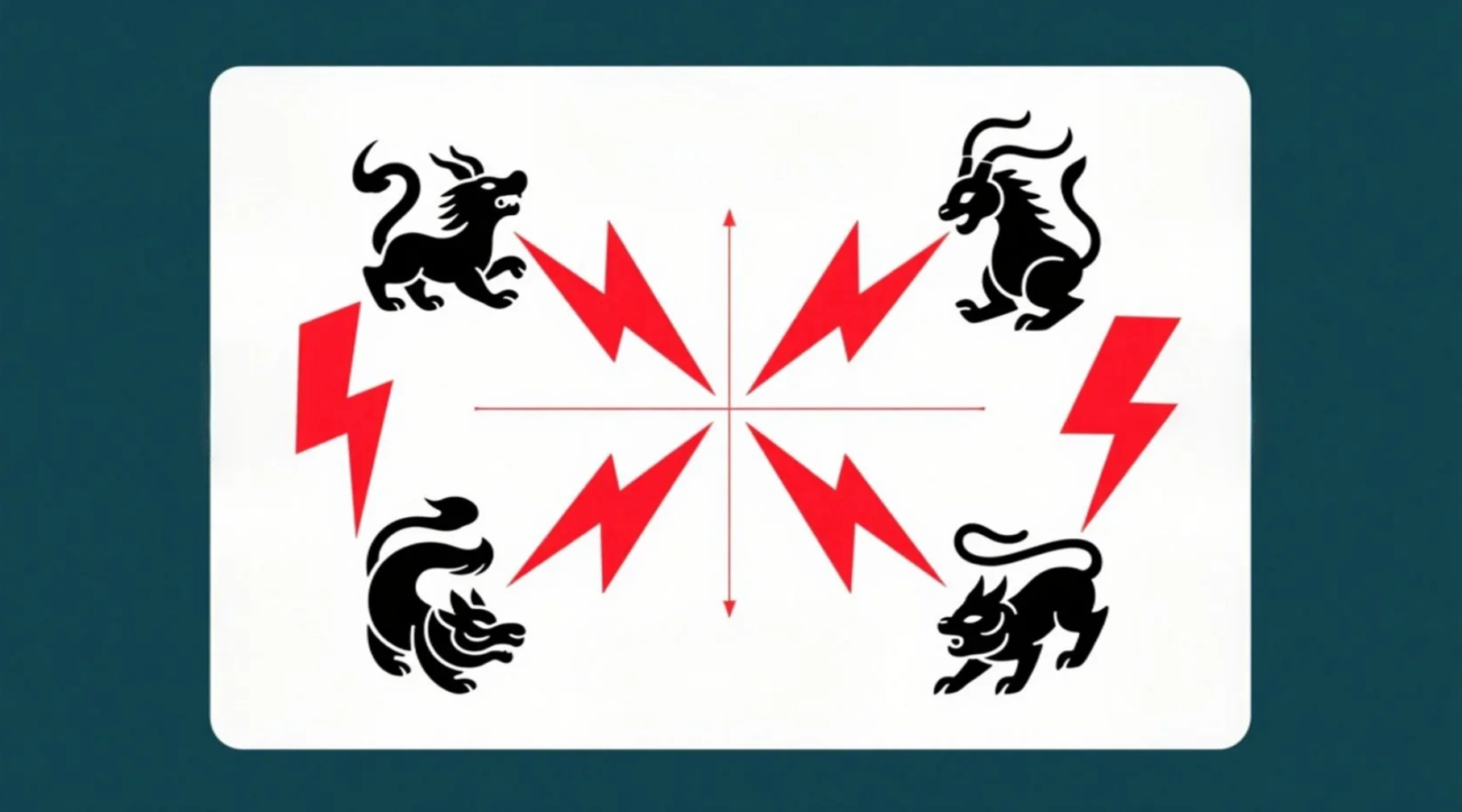
It’s important to emphasize that an incompatible zodiac sign pairing is not a death sentence for a relationship. Think of it as highlighting potential friction points. Traditionally, people took these clashes seriously (in old times, marriages might even be discouraged if the zodiac signs badly conflicted). But in modern view, it simply means the two individuals may have to work a bit harder on understanding and communication. In fact, one Feng Shui master notes that we shouldn’t assess relationships using zodiac signs alone, as it’s an oversimplification . Every person is unique, and a loving, committed couple can absolutely overcome a zodiac “clash” with mutual effort. Use the knowledge of clashes as a tool – for example, if you and your partner have a known conflict combo, be aware of the tendencies (pride, stubbornness, etc.) that might arise, and actively communicate to resolve issues. Many couples with “mismatched” signs have happy relationships; they’ve just learned to appreciate their differences rather than see them as a problem.
Final Thoughts: Chinese Zodiac Compatibility as a Relationship Tool
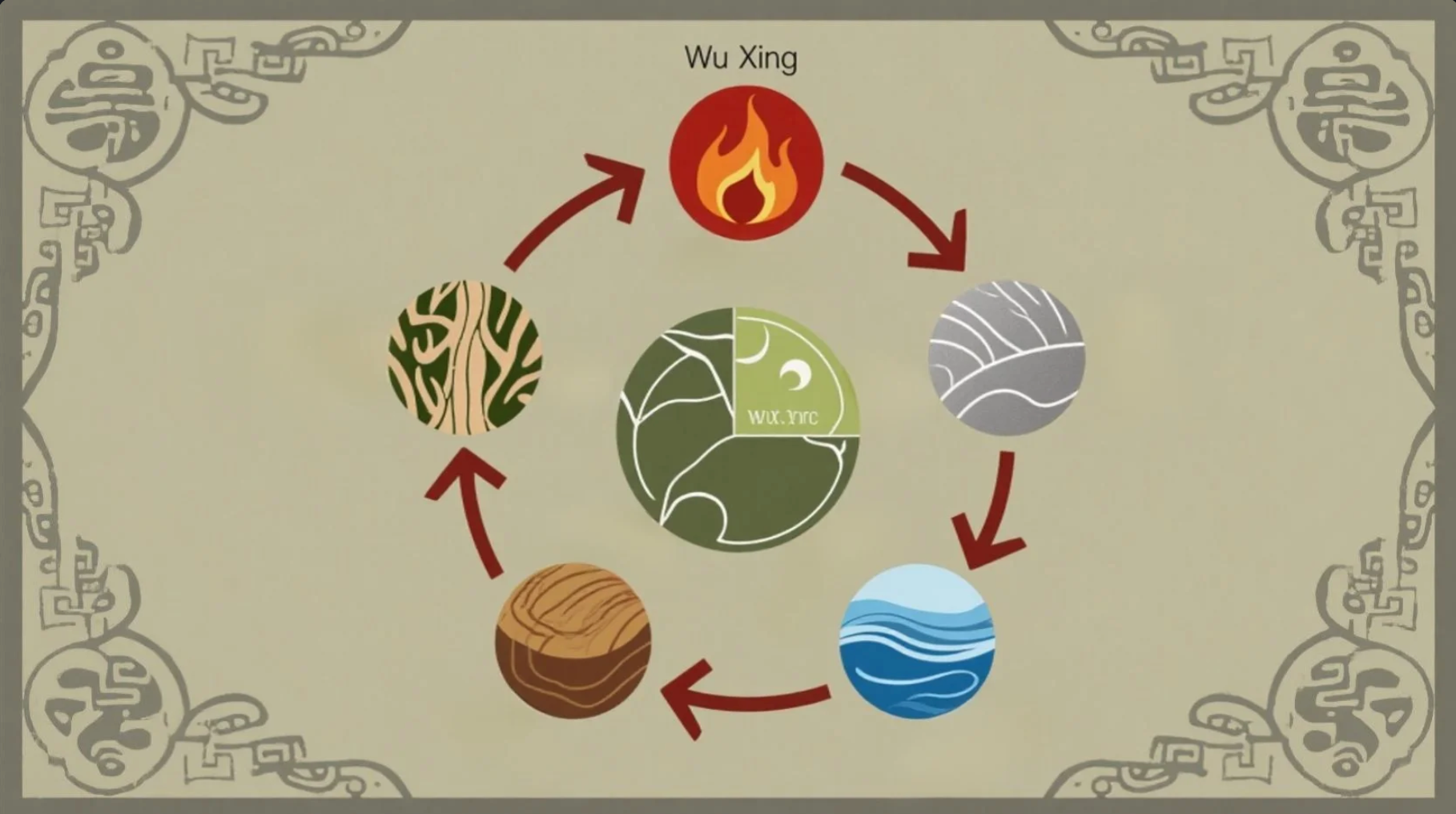
While Chinese zodiac compatibility isn’t a science, it offers a culturally rich and time-tested framework for exploring relationship dynamics. Whether you’re using it for fun, curiosity, or self-reflection, understanding your zodiac sign’s strengths and clashes can prompt valuable conversations in love and partnership. Remember: even the most “challenging” sign pairings can thrive with mutual respect and effort, while a “perfect match” still needs nurturing to grow. Use this guide as a reference, not a rulebook—and let it spark deeper understanding between you and your loved one.
For personalized insights, consider trying a modern AI-powered Chinese zodiac compatibility tool—combining ancient wisdom with today’s technology for even more meaningful guidance.